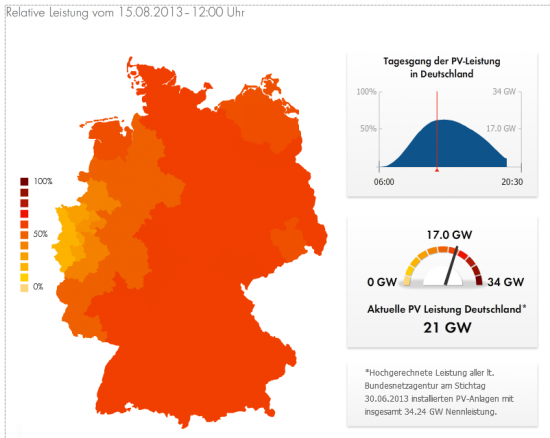It was predictable - probably inevitable - that Barack Obama would speak at the Brandenburg Gate on his visit to Berlin, today. The presidential trip, after all, coincided almost to the day with the 50th anniversary of John F. Kennedy’s famous speech at the same site. Then, Kennedy declared U.S. solidarity with Germans trapped on the Soviet side of the Berlin Wall, as well as with those in the West who were encircled by the Soviets, saying, “Ich bin ein Berliner.” (I am a Berliner.)
The Brandenburg Gate was also the setting for President Ronald Reagan’s most famous quote, his challenge addressed to the then-leader of the then-Soviet Empire: “Mr. Gorbachev, tear down this wall!” (Timing was also a factor in this case - Reagan’s speech was on June 12, 1986.)
Still, it would have been nice if Obama had done the unexpected, if instead of using the Brandenburg Gate as a backdrop, the U.S. president had visited the Reichstag, the German parliament building just a block away. After all, the Reichstag is a far better symbol of the greatest challenge facing the world today.

The Reichstag. (Photo by Osha Gray Davidson)
As Obama himself said today: “[Climate change]….is the global threat of our time. And for the sake of future generations, our generation must move toward a global compact to confront a changing climate before it is too late. That is our job. That is our task. We have to get to work.”
In Berlin, there is no better symbol than the Reichstag for “getting to work” on transforming our dangerous and antiquated energy economy. Following the reunification of the two Germany’s, the Reichstag was rebuilt by the English architect Sir Norman Foster, to be the greenest parliament building in the world.

Solar “light sculpture” in the Reichstag. (Photo by Osha Gray Davidson)
The glass dome on the roof symbolizes openness and transparency in government (timely issues themselves). It also funnels sunlight into the main parliamentary chamber, reducing the need for artificial light. Solar panels are also built into the Reichstag roof.
A large portion of the building’s electricity comes from a cogenerator in the basement that burns vegetable oil. Excess heat from the process is pumped into a subterranean aquifer where it is retrieved in the winter. Electricity not produced on site is purchased from renewable energy providers — who use solar, wind and hydroelectric resources.
If President Obama had had the time, he could have seen an even better symbol of the energy transition (Energiewende in German) by traveling down to a small farming village in the Black Forest. I visited Bernau im Schwarzwald last summer on a “renewable energy” tour of Germany. The village wasn’t on my schedule. It was just a cheap and convenient place to spend the night as I traveled to energy projects in nearby cities. Located in a lush valley, it seemed that nearly every roof in the village was covered in solar panels. Below is a picture I took of a small section of the village. I’ve placed red circles around each solar array I counted. Some are photovoltaic panels - PV - and others are solar water heaters.

Solar roofs in a German village (Photo by Osha Gray Davidson)
There’s nothing special about this section of Bernau. Aim your camera in a different direction and you’ll get the same basic results. The village itself isn’t unique. I traveled throughout Germany and saw pretty much the same scene wherever I went: roofs covered with solar panels. (And, very often, wind turbines adding power to the grid).
I thought about Bernau recently while hiking in Phoenix, Arizona, where I live. Here’s a picture from that excursion, with solar arrays again circled.

Solar roofs in Phoenix.
The difference is pretty obvious. Not only are there far fewer arrays, but the size of each one is many times smaller than the average array in Bernau. In fact, there’s more power being generated on a given single roof in the German village than there is on all the roofs in the picture of Phoenix.
By streamlining permits for installing solar panels and providing market incentives to individuals and groups are willing to invest in renewable energy, Germany is far ahead of the United States in building a renewable energy infrastructure. There’s a lot President Obama can learn from the German Energiewende, lessons that translate into PV solutions in the USA.
As Obama put it, standing before the Brandenburg Gate, “We are not only citizens of America or Germany — we are also citizens of the world. And our fates and fortunes are linked like never before.”
He got that right. Now, he needs to lead America in building an energy policy that makes our shared world sustainable for generations to come.




